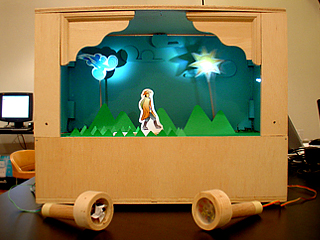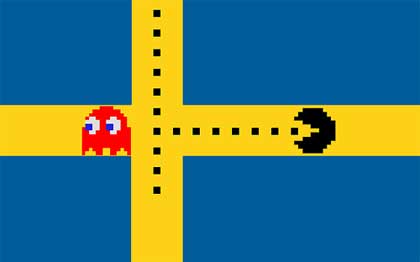Interactive Puppet Theatre

Here's another great project from NYU ITP's Winter Show (you might be seeing a few more of these in the coming days; ITP shows are like Christmas-come-early for Computerkrafters):
The North Wind and The Sun is the first production by the Interactive Puppet Theatre. Here's the Scenario:
1. Every 4 minutes, a story starts.
2. Two children will be invited to play - one as the North Wind and the other as the Sun.
3. Both players will wear each costume; the Wind and the Sun, and hold its controller.
4. Watch and listen to the story.
5. When it is the Wind's turn to blow wind in the story, the blue light blinks as an indication.
6. The Wind child blows wind into the controller.
7. Repeat the above 5-6 steps according to the story.
8. When it is the Sun's turn to throw sunshine, the yellow light blinks as an indication
9. The Sun child blows warm breath into the controller.
10. Repeat the above 8-9 steps according to the story.
11. Watch and listen to the story.
To get a look at the project in action, you can watch the Interactive Puppet Theatre Video on Google Video. And if you want to create some 'interactive puppet theatre' of your own, it actually doesn't sound all that complicated (for how sophisticated the resulting interaction is). Here are the ingredients:
- Two Arduinos for controlling input and output, there are a total of 32 steps in the story.
- Six Servo motors: One for the Sun, one for Wind and four for the status of the traveler.
- An MP3 player for narration and background music.
- A microphone for the Wind controller (Same mechanism as the internal microphone in the Nintendo DS.)
- A thermometer for the Sun controller, which detects warm breath or rubbing.
Read the the artists' build journal and you'll be on your way.

 The
The 



















